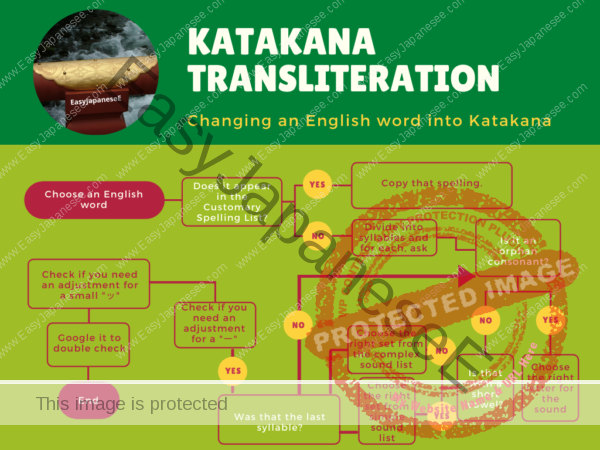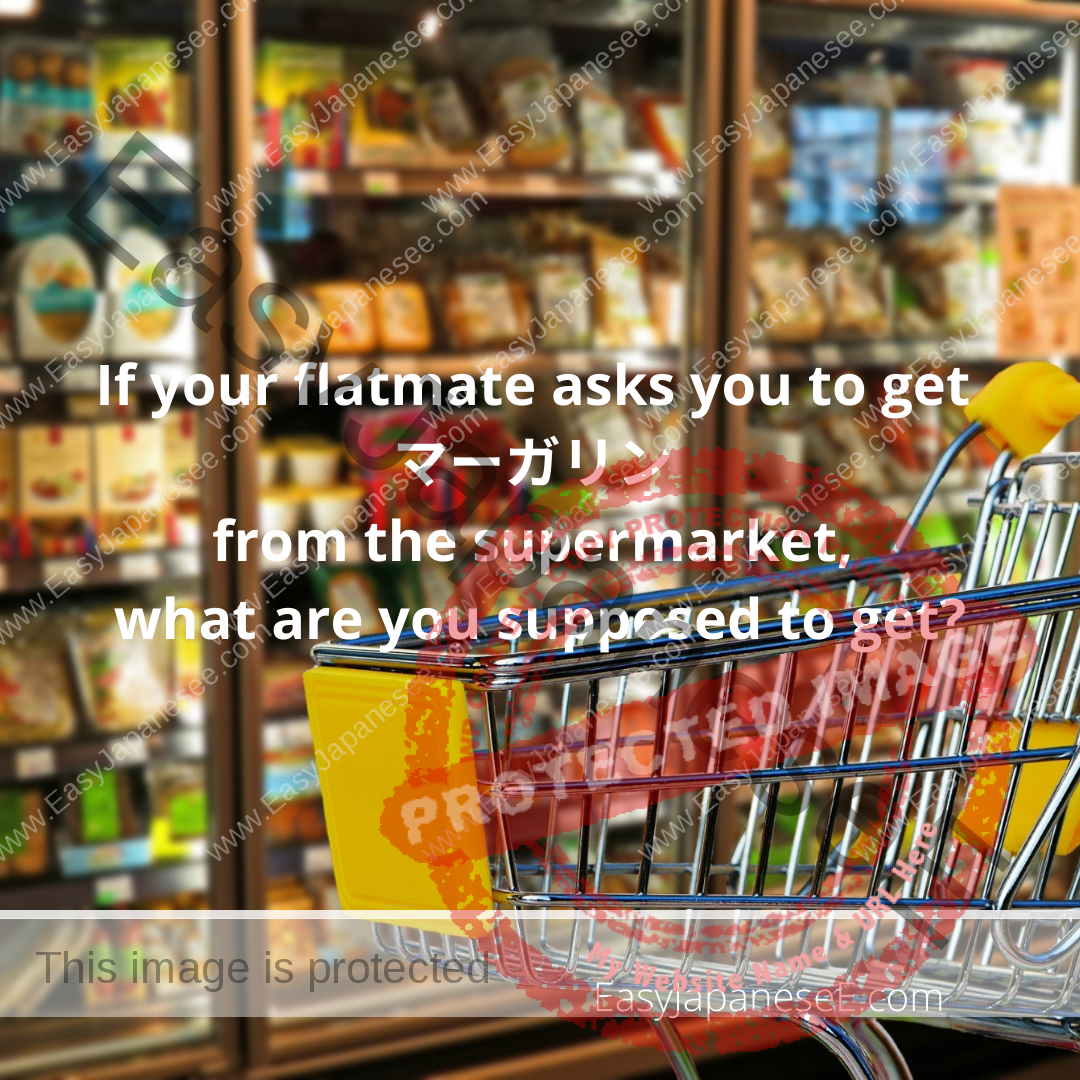
If your flatmate asks you to get マーガリン from the supermarket, what are you supposed to get?
This question may be easier to answer if you are not a native speaker of English.
マーガリン is the katakana transliteration of “margarine” and I still feel puzzled how on earth “margarine” is pronounced like “margerine” in English!
Because of this “g” sound, マーガリン is listed in the customary spelling list in my website, but if you ignore the sound, the spelling of “margarine” follows katakana transliteration rules perfectly.
In order to transliterate an English, you should follow this chart.

- Check the customary spelling list.
You will find “margarine” here. - Divide the word into Katakana syllables, that is:
- an orphan consonant (consonant not followed by a vowel)
- a vowel with or without “r”
- a combination of a consonant and a vowel with or without “r”.
so margarine = mar/ga/ri/ne
- Change each syllable into a (set of) katakana letter(s).
- mar = mar is a longer sound than just “ma”, so you need マー
- ga = a simple sound of ガ
- ri = a simple sound of リ
- ne = an orphan consonant of ン (the last “e” is silent.)
Margarine is now changed to マーガリン.
In this example, the spelling of “mar” was written as マー with “ー” but there are occasions when a vowel followed by the letter “r” is not written with “ー.” Also sometimes you need to add a small ッ in the Katakana spelling.
If you are interested in learning the Katakana transliteration rules, my “Katakana Learning Modules” on Moodle has comprehensive explanation. Please check it out at.

